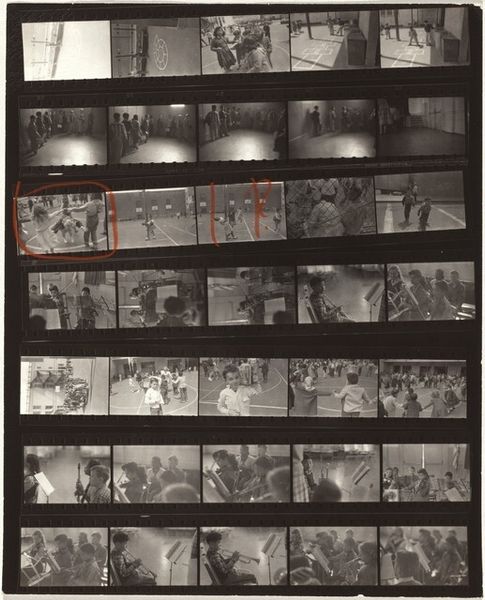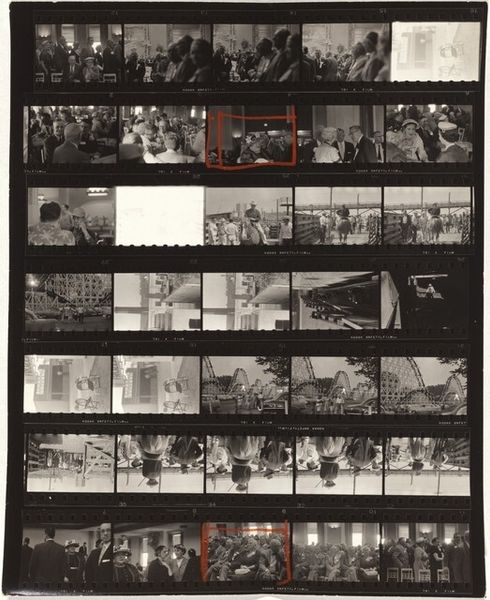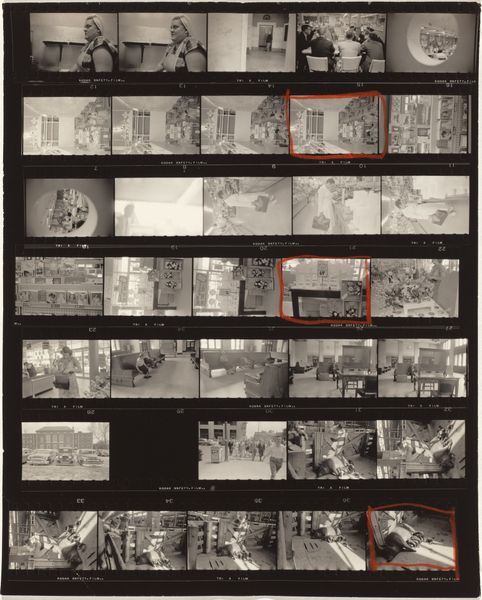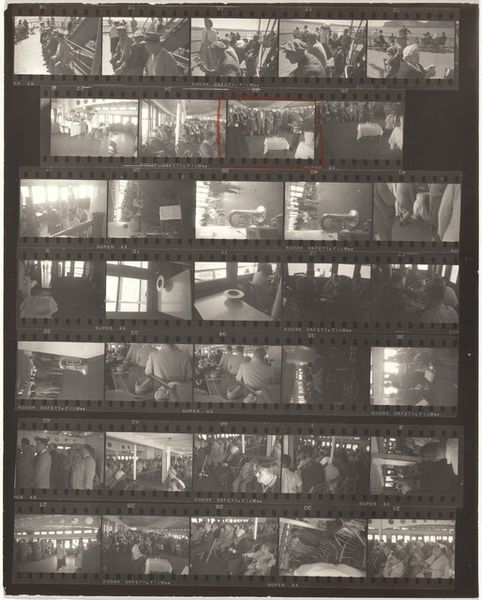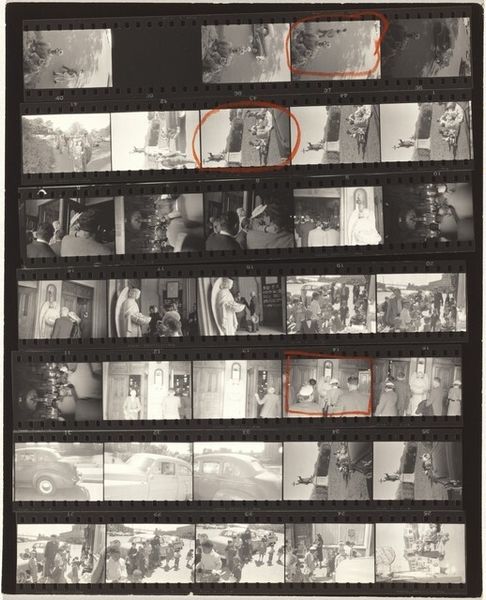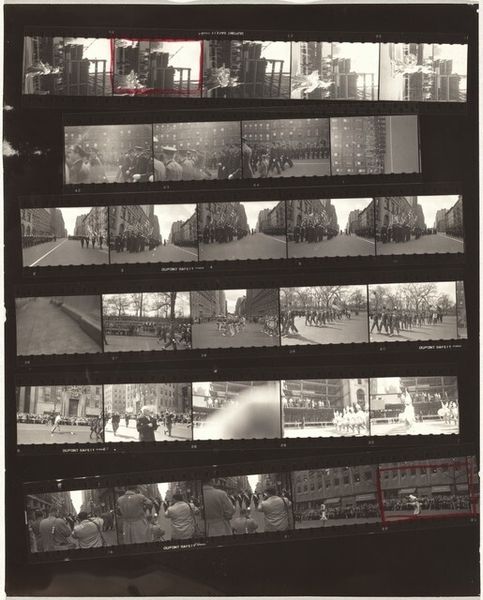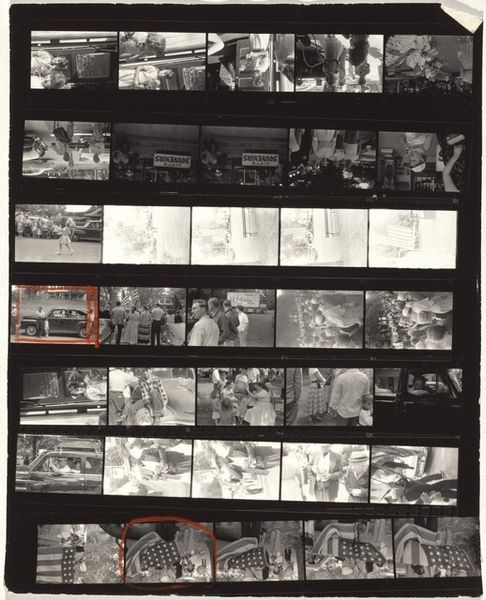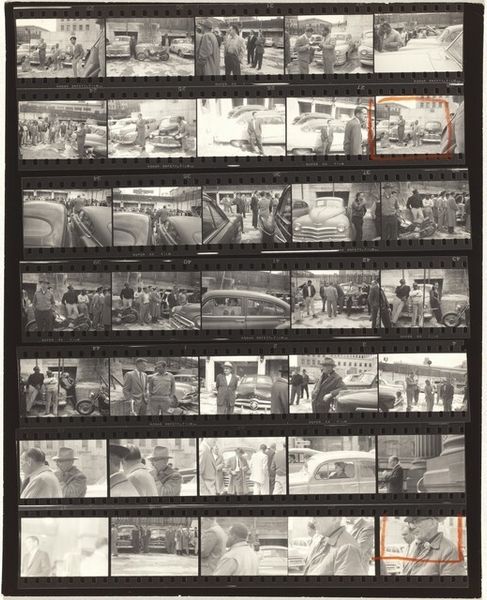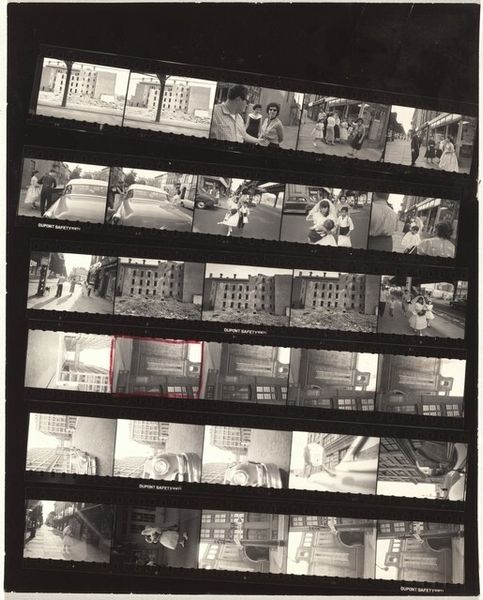
photography, gelatin-silver-print
#
film photography
#
street-photography
#
photography
#
gelatin-silver-print
#
monochrome photography
#
modernism
#
monochrome
Dimensions: overall: 25.4 x 20.3 cm (10 x 8 in.)
Copyright: National Gallery of Art: CC0 1.0
Editor: Here we have Robert Frank’s "Guggenheim 39--Pittsburgh, Pennsylvania," a gelatin-silver print from 1955. It’s a fascinating look at a whole roll of film. I’m struck by how much it reveals about Frank’s process; you see his considerations and the different angles he experimented with. What catches your eye? Curator: I see the photograph as highlighting the industrial labor of the photographer, not just the subject. Frank's darkroom processes, his selections—or rejections—manifested here in the very materiality of the photographic strip. Consider also the social context: 1950s Pittsburgh, a city built on steel, industry, and labor. How does Frank capture that relationship in these images? Editor: I see the working-class subject matter in some of the individual frames—the crowds and what looks like construction. But presenting the entire roll challenges the preciousness often associated with art photography. It feels almost like raw data. Curator: Precisely! He disrupts the notion of the single, perfectly composed image. It raises questions about authorship, artistic intention, and the commodification of photography. We're given a glimpse into the labor, the act of taking and developing these images, pushing the conversation toward the means of production, wouldn’t you agree? Editor: I do. It’s not just the "decisive moment," but the entire working process, from exposure to print, laid bare. Thanks; that really sheds a different light on Frank’s approach for me. Curator: And for me, considering how Frank deliberately reveals the materiality of the gelatin-silver print underscores the socio-economic elements that define this artistic production and moment.
Comments
No comments
Be the first to comment and join the conversation on the ultimate creative platform.
